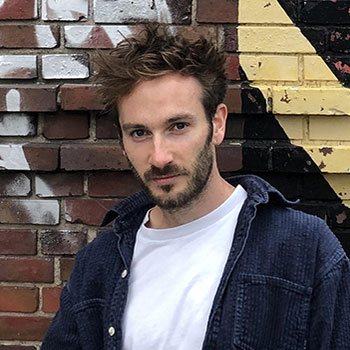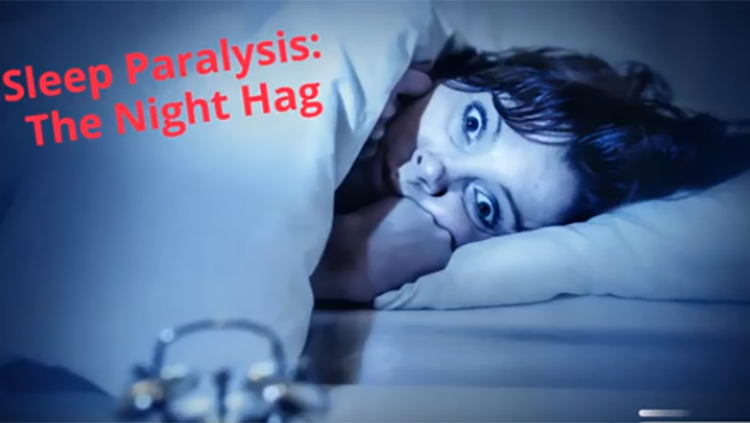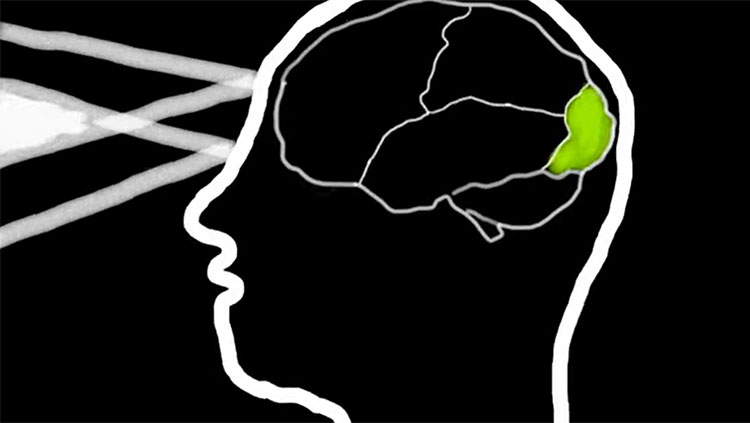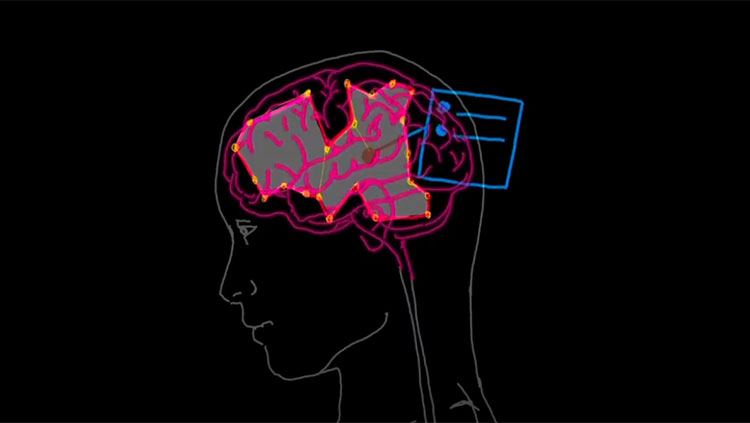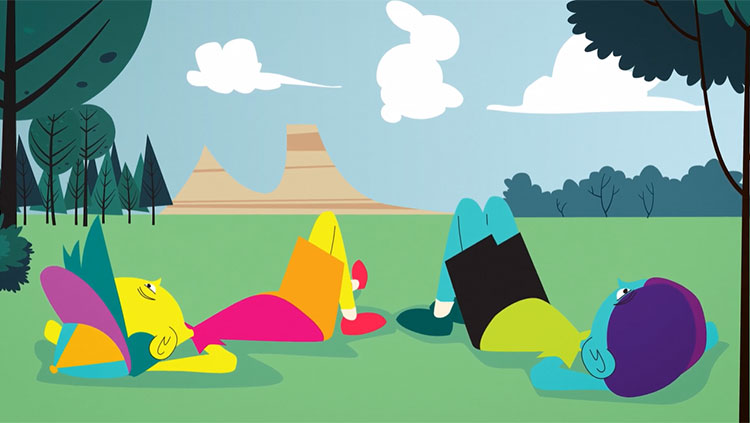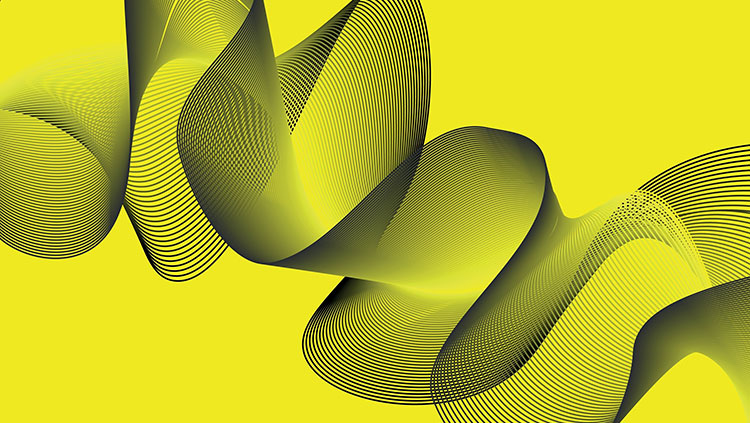Presence Hallucination Research Shows How Our Brains Conjure Ghostly Illusions
- Published30 Oct 2024
- Author Fred Schwaller
- Source BrainFacts/SfN
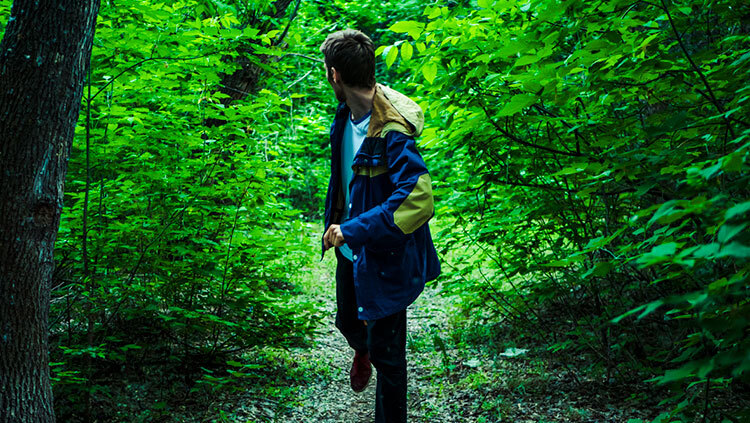
The explorer Ernest Shackleton and his crew were stranded in the Antarctic for more than a year after their ship, the HMS Endurance, became stuck and later sank in the sea ice in 1915. As they crossed freezing mountains and glaciers, Shackleton and his two companions felt like they were being followed. “It seemed to me often that we were four, not three,” Shackleton wrote in South, his account of their survival.
Shackleton’s haunting experiences are now understood to have been presence hallucinations, or the strange sensation someone is nearby despite a lack of reliable sensory evidence to confirm their existence. Presence hallucinations can be minor, like hearing your name on the wind. But sometimes, people feel like someone is standing right behind them, or like a creepy figure is looming out in the darkness.
Scientists are beginning to understand how and why our brains conjure up presence hallucinations. Research suggests these sensations may occur more frequently for people experiencing intense distress or those with neurological diseases, like Parkinson’s disease.

“Presence hallucinations are often seen during times of extreme physiological or emotional states, like for Shackleton,” says Ben Alderson-Day, a psychologist at Durham University in England and author of Presence: The Strange Science and True Stories of the Unseen Other.
Alderson-Day’s view is that many presence hallucinations are likely to be products of the mind. But that’s not to say they don’t feel real to people who have experienced them, particularly in the context of someone grieving a loss. Scientists appreciate that these sensations can be powerful, life-changing, and even spiritual events, he says.
“Some of these people say presences have identities, like ‘it’s my mother who visited me’,” says Fosco Bernasconi. He is a neuroscientist who studies presence hallucinations at Polytechnique Fédérale de Lausanne (EPFL) in Switzerland. Experiencing presence hallucinations doesn’t necessarily indicate you have a psychiatric disease, Bernasconi emphasizes. “Most are positive experiences, with some saying they’re like guardian angels.”
Studying What’s Not Truly There
Research focusing on presence hallucinations started to make significant progress 18 years ago, when scientists identified a brain region responsible for these sensations.
In 2006, scientists led by Olaf Blanke at EPFL showed they could induce the sensation of a shadowy presence in a person. They did so by electrically stimulating a specific part of the brain called the left temporoparietal junction. This brain region connects observations from the outside environment with internal memories and thoughts. It has also been linked to hallucinations.
To study how the brain forms presence hallucinations in more detail, scientists in Blanke’s lab had to develop a way to induce them. Their system involves two robots. A participant's arm is connected to one robotic device, and the participant is asked to move their hand and finger in a poking motion. A robot behind the participant is synchronized to these movements and pokes the participant in the back.
The researchers then introduce time delays between the two robots. “When the back is poked out of sync with participants’ arm movements, it induces a sensation like someone else is poking them in the back,” explains Louis Philippe Albert, a PhD student in Blanke’s lab. This experience evokes a presence hallucination.
The experiments have led to a new theory of how presence hallucinations occur in the brain. The theory relates to how our brain constructs a sense of self.
"Our sense of self is built from integrating lots of cues about ourselves and the environment, built up from our bodily senses, including proprioception — the sense of our body position," Bernasconi says.
Normally, these senses are synchronized to a combined sense of self in the brain. “When we do an action, our motor system creates a prediction of this action’s sensory consequences. Our brain expects that prediction to come true,” Bernasconi says. “But if there is a mismatch — if the time or location of what we feel doesn’t match the reference — then you think somebody else generated this touch.”
Extreme circumstances can trigger presence hallucinations by messing with this sense of self, as Shackleton’s experience shows, says Alderson-Day.
“Hallucinations are induced rapidly when you deprive the brain of oxygen, but also when you’re in an unusual environment where you’re deprived of sensory stimulation,” he says. “These states can push the brain to the brink in how it constructs a unitary sense of self.”
Studying presence hallucinations has clinical relevance, says Bernasconi, whose recent research shows having presence hallucinations may be linked to more rapid cognitive decline in patients with Parkinson’s disease.
“We know that presence hallucinations are more common in people with Parkinson’s disease,” Bernasconi says. “We don’t exactly know why yet, [but we] think it could be because of sensorimotor impairments, which cause the misperception of one’s own bodily signals.”
Our Beliefs Drive Our Perceptions
Shackleton’s account of being followed by an unseen force and the presence hallucinations people with Parkinson’s can experience are both squarely in the realm of the explicable. But the science behind these hallucinations can help us understand how and why people may report paranormal encounters.
Our prior beliefs, plus a combination of cognitive and perceptual biases, all play a major role in informing this phenomenon, says Christopher French, an anomalistic psychologist at Goldsmiths, University of London.
“Research has shown that even telling people a location is haunted makes some people have paranormal sensations,” French adds. “We tend to find patterns and meaning in what's going on around us. Sometimes we overplay it to make connections that aren’t there. It's not a million miles to jump from the idea that a noise in the night might be a ghost or a spirit.”
French says we’ve evolved to be on alert for danger, so we’re primed to see threatening figures in dangerous locations, like dark caves or creepy castles. If we’ve already been led to believe a dark place is full of scary monsters, we’re more likely to “feel” their breath on the back of our necks.
But the more likely explanation is our brains causing us to sense something that isn’t actually there.
CONTENT PROVIDED BY
BrainFacts/SfN
References
Albert, L., Potheegadoo, J., Herbelin, B., Bernasconi, F., Blanke, O. (2024). Numerosity estimation of virtual humans as a digital-robotic marker for hallucinations in Parkinson’s disease. Nature Communications, 15, 1905. https://doi.org/10.1038/s41467-024-45912-w
Alderson-Day, B. (2023). Presence: The strange science and true stories of the unseen other. Manchester University Press. https://manchesteruniversitypress.co.uk/9781526173508/
Arzy, S., Seeck, M., Ortigue, S., Spinelli, L., Blanke, O. (2006). Induction of an illusory shadow person. Nature, 443, 287. https://doi.org/10.1038/443287a
Blanke, O., Pozeg, P., Hara, M., Heydrich, L., Serino, A., Yamamoto, A., Higuchi, T., Salomon, R., Seeck, M., Landis, T., Arzy, S., Herbelin, B., Bleuler, H., & Rognini, G. (2014). Neurological and robot-controlled induction of an apparition. Current Biology, 24(22), 2681–2686. https://doi.org/10.1016/j.cub.2014.09.049
French, C. (2024). The Science of Weird Shit: Why Our Minds Conjure the Paranormal. MIT Press. https://mitpress.mit.edu/9780262048361/the-science-of-weird-shit/
What to Read Next
Also In Thinking & Awareness
Trending
Popular articles on BrainFacts.org


